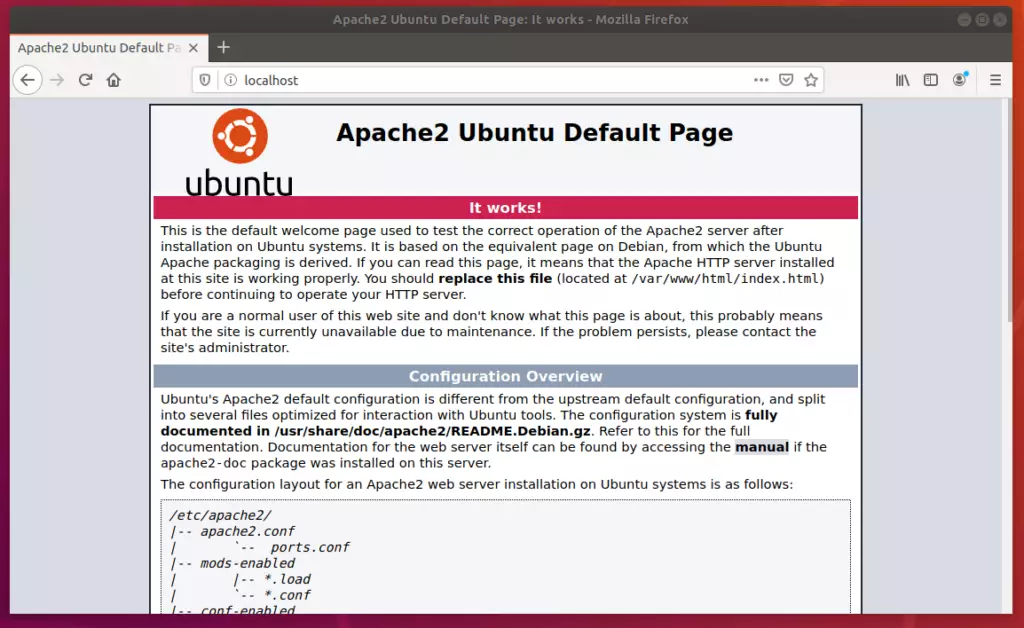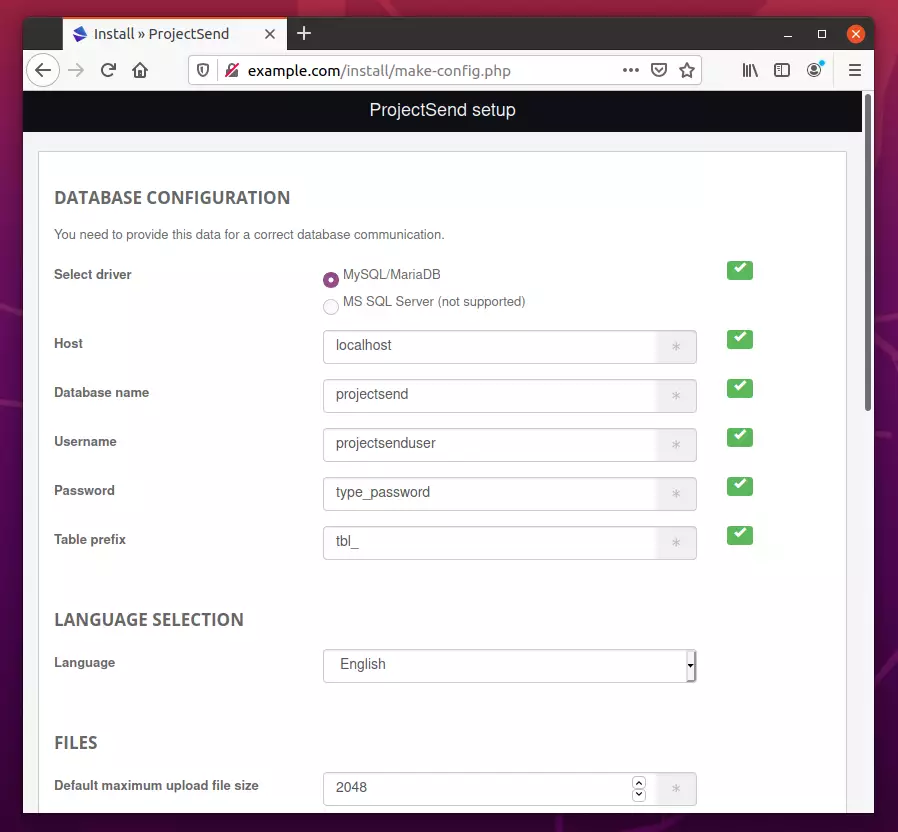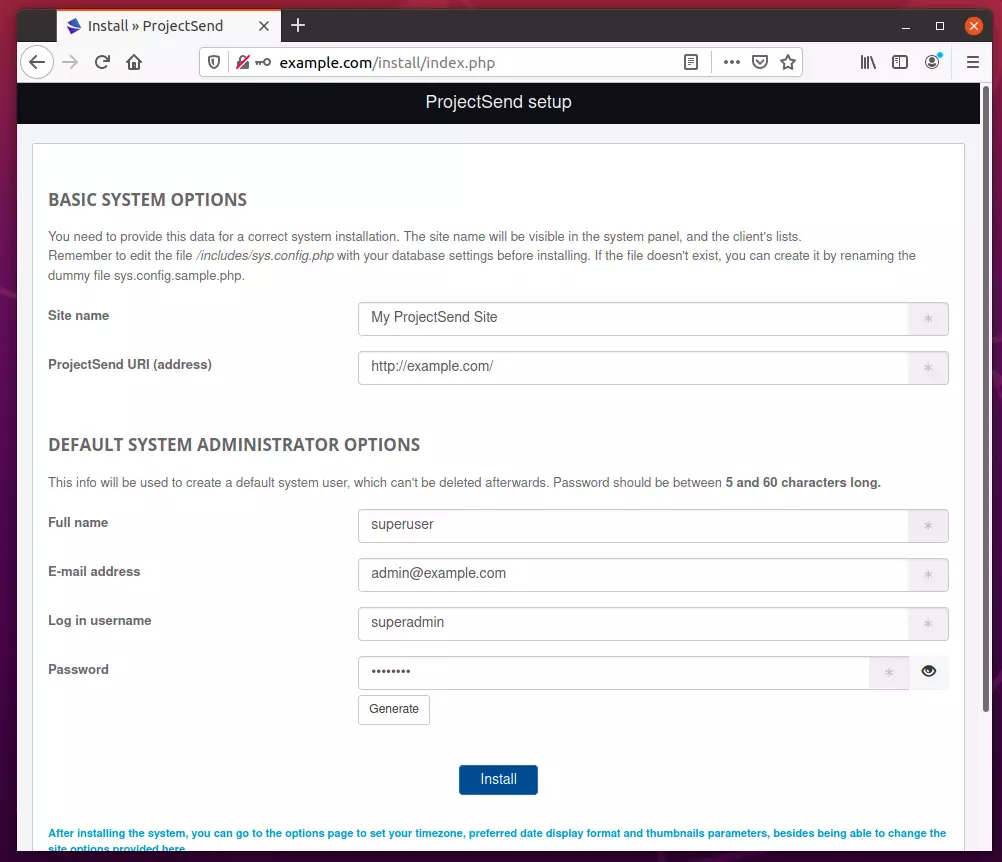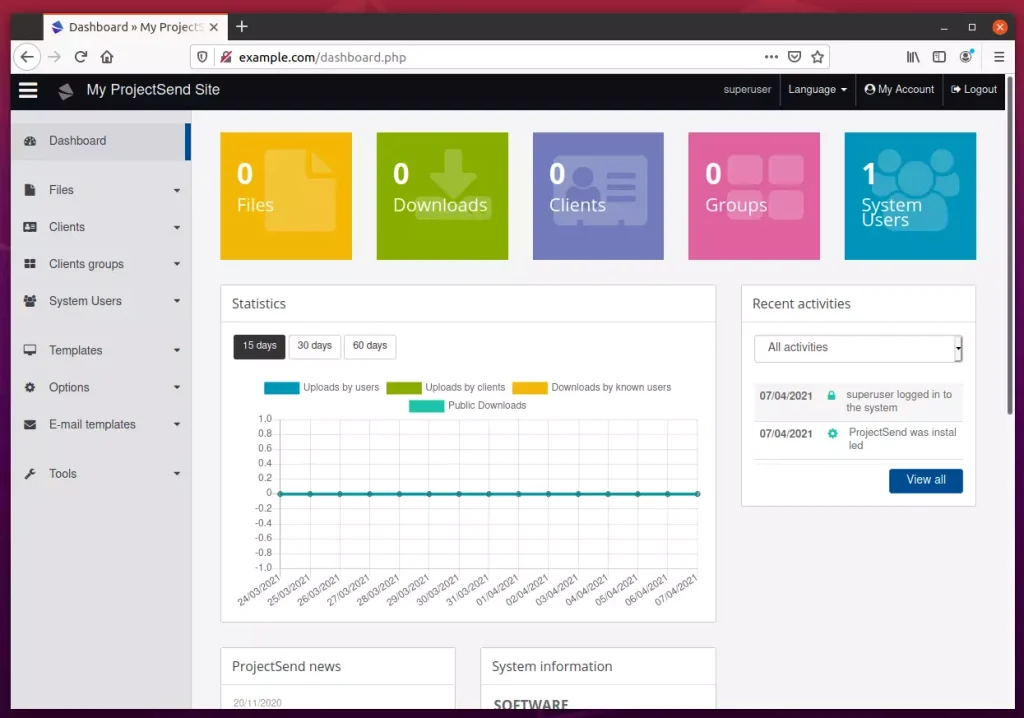This brief tutorial shows students and new users how to install ProjectSend on Ubuntu 20.04 | 18.04 LTS systems.
ProjectSend is a free, secure, self-hosted, and user-friendly file-sharing software.
Installing ProjectSend with Apache on Ubuntu Linux allows you to set up a secure, self-hosted file-sharing platform that gives you complete control over your data.
With ProjectSend, you can easily upload and assign files to specific clients, eliminating the need to rely on third-party services or send files via email. By using Apache as the web server, you can ensure that your files are securely stored and easily accessible on every device while also benefiting from the powerful user and admin dashboard that ProjectSend provides.
This tutorial provides a step-by-step guide to installing ProjectSend with Apache on Ubuntu 20.04 | 18.04 and is suitable for personal and company use.
When you’re ready to install and use ProjectSend, follow the steps below:
Install Apache
Apache HTTP Server is probably the second most popular web server today. Go and install Apache since ProjectSend needs it.
To install Apache HTTP on the Ubuntu server, run the commands below.
sudo apt update sudo apt install apache2
After installing Apache, the commands below can stop, start, and enable Apache service to always start up with the server boots.
sudo systemctl stop apache2.service sudo systemctl start apache2.service sudo systemctl enable apache2.service
To test the Apache setup, open your browser and browse to the server hostname or IP address. You should see the Apache default test page, as shown below.
http://localhost

Install MariaDB
MariaDB database server is a great place to start when looking at open-source database servers to use with ProjectSend.
To install MariaDB, run the commands below.
sudo apt install mariadb-server mariadb-client
After installing MariaDB, the commands below can stop, start, and enable the service to start when the server boots.
sudo systemctl stop mariadb.service sudo systemctl start mariadb.service sudo systemctl enable mariadb.service
After that, run the commands below to secure the MariaDB server by creating a root password and disallowing remote root access.
sudo mysql_secure_installation
When prompted, answer the questions below by following the guide.
- Enter current password for root (enter for none): Just press the Enter
- Set root password? [Y/n]: Y
- New password: Enter password
- Re-enter new password: Repeat password
- Remove anonymous users? [Y/n]: Y
- Disallow root login remotely? [Y/n]: Y
- Remove test database and access to it? [Y/n]: Y
- Reload privilege tables now? [Y/n]: Y
To test if MariaDB is installed, type the commands below to log on to the MariaDB server.
sudo mysql -u root -p
Then, type the password you created above to sign on. If successful, you should see a MariaDB welcome message.

Install PHP 7.4
PHP 7.4 may not be available in Ubuntu default repositories. To install it, you will have to get it from third-party repositories.
Run the commands below to add the below third party repository to upgrade to PHP 7.4
sudo apt-get install software-properties-common sudo add-apt-repository ppa:ondrej/php
Then update and upgrade to PHP 7.4
sudo apt update
Next, run the commands below to install PHP 7.2 and related modules.
sudo apt install php7.4 libapache2-mod-php7.4 php7.4-common php7.4-curl php7.4-intl php7.4-mbstring php7.4-xmlrpc php7.4-mysql php7.4-gd php7.4-xml php7.4-cli php7.4-zip imagemagick php-imagick php7.4-bz2 php7.4-bcmath php7.4-gmp
After installing PHP 7.4, run the commands below to open Apache’s PHP default config file.
sudo nano /etc/php/7.4/apache2/php.ini
Then, save the changes on the following lines below in the file. The value below is an ideal setting to apply in your environment.
file_uploads = On allow_url_fopen = On short_open_tag = On memory_limit = 256M upload_max_filesize = 100M max_execution_time = 360 date.timezone = America/Chicago
Create ProjectSend Database
Now that you’ve installed all the packages required for ProjectSend to function, continue below to start configuring the servers. First, run the commands below to create a blank ProjectSend database.
To log on to the MariaDB database server, run the commands below.
sudo mysql -u root -p
Then, create a database called projectsend
CREATE DATABASE projectsend;
Create a database user called projectsenduser with a new password
CREATE USER 'projectsenduser'@'localhost' IDENTIFIED BY 'new_password_here';
Then, grant the user full access to the database.
GRANT ALL ON projectsend.* TO 'projectsenduser'@'localhost' WITH GRANT OPTION;
Finally, save your changes and exit.
FLUSH PRIVILEGES; EXIT;
Download and Install ProjectSend
Download the ProjectSend package from its download page. You can simply run the commands below to create a ProjectSend directory, extract its content into the directory, and change the content permissions.
cd /tmp sudo wget -O projectsend.zip https://www.projectsend.org/download/387/ sudo mkdir -p /var/www/projectsend sudo unzip projectsend.zip -d /var/www/projectsend/
Once you’re done above, run the commands below to create a ProjectSend configuration file from the sample.
sudo cp /var/www/projectsend/includes/sys.config.sample.php /var/www/projectsend/sys.config.php
After that, run the commands below to open its configuration file.
sudo nano /var/www/projectsend/sys.config.php
Then make the highlighted changes below:
/**
Database driver to use with PDO.
Possible options: mysql, mssql
*/
define('DB_DRIVER', 'mysql');
/** Database name */
define('DB_NAME', 'projectsend');
/** Database host (in most cases it's localhost) */
define('DB_HOST', 'localhost');
/** Database username (must be assigned to the database) */
define('DB_USER', 'projectsenduser');
/** Database password */
define('DB_PASSWORD', 'type_database_user_password');
/**
Prefix for the tables. Set to something other than tbl_ for increased
security onr in case you want more than 1 installations on the same database.
Save and exit.
Next, run the commands below to change the root folder permissions.
sudo chown -R www-data:www-data /var/www/projectsend/ sudo chmod -R 755 /var/www/projectsend/
Configure ProjectSend Site
Next, configure the Apache virtual host for the ProjectSend site. This file will control how users access ProjectSend content. Run the commands below to create a new configuration file called projectsend.conf
sudo nano /etc/apache2/sites-available/projectsend.conf
Then copy and paste the content below into the file and save it. Replace the highlighted line with your domain name and directory root location.
<VirtualHost *:80>
ServerAdmin admin@example.com
DocumentRoot /var/www/projectsend
ServerName example.com
ServerAlias www.example.com
<Directory /var/www/projectsend/>
Options +FollowSymlinks
AllowOverride All
Require all granted
</Directory>
ErrorLog ${APACHE_LOG_DIR}/error.log
CustomLog ${APACHE_LOG_DIR}/access.log combined
</VirtualHost>
Save the file and exit.
After configuring the VirtualHost above, please enable it by running the commands below and restart Apache.
sudo a2ensite projectsend.conf sudo a2enmod rewrite sudo systemctl restart apache2.service
Finally, open your browser and go to the URL.
You should see the ProjectSend setup wizard—type in the database name, username, and password. Then, continue with the wizard.

Next, create the site name, administrator account, and password.

After the installation, log in with the admin account created above.

That’s it!
Conclusion:
This post showed you how to install ProjectSend on Ubuntu 20.04 | 18.04. If you find any error above, please use the form below to report.

Leave a Reply to Richard Zayzay Cancel reply